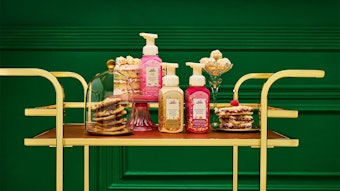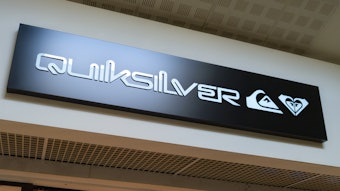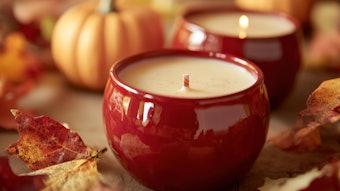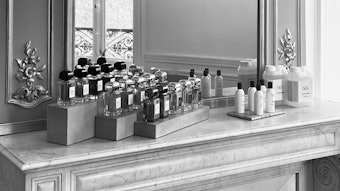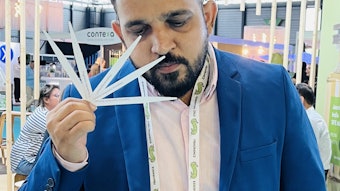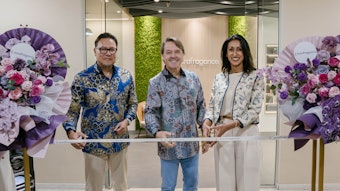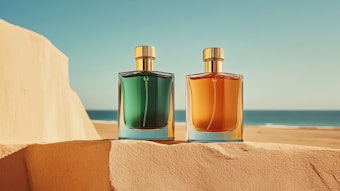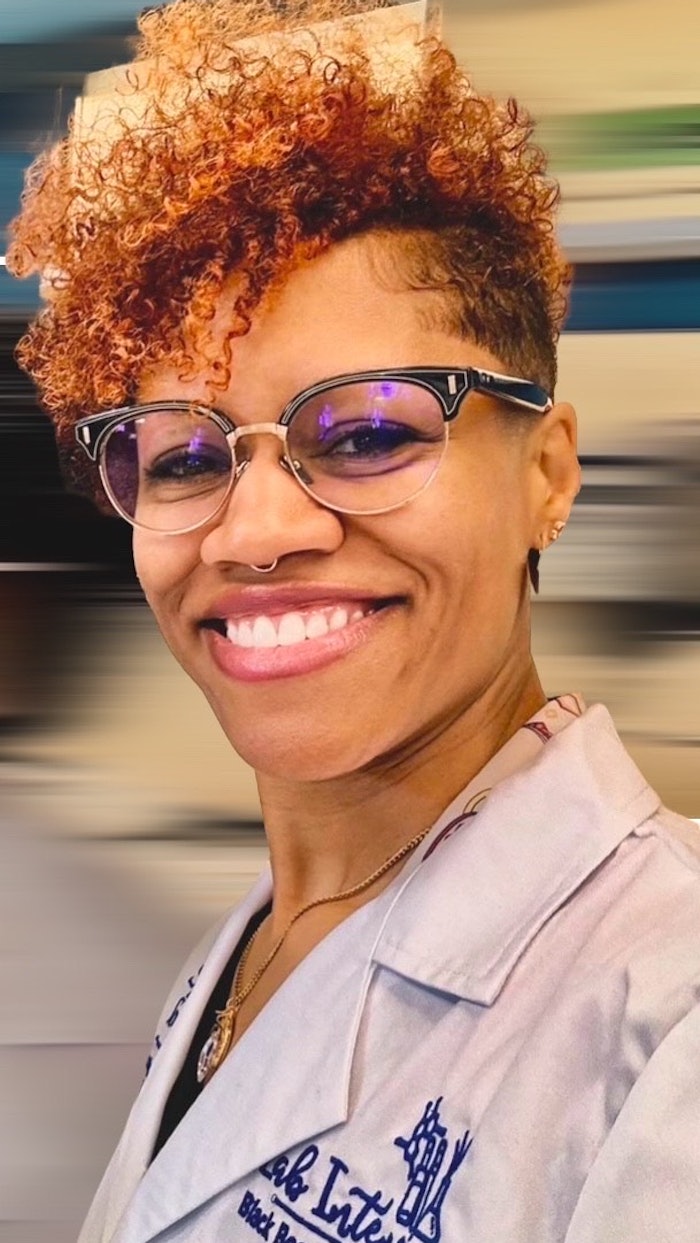
Name: Chavalia Dunlap-Mwamba
Title: Perfumer/Nose
Company: Pink MahogHany
Location: Longview, Texas
Can you share a defining moment or significant breakthrough in your career as a perfumer? A significant breakthrough:
Chavalia Dunlap-Mwamba [CDM]: As we celebrate nearly 20 years in the fragrance industry, we reflect on the many defining moments and significant breakthroughs that have shaped our journey. One of our most exciting developments is the upcoming release of our new custom packaging, private collection bottles, and exclusive olfactory experiences. These offerings will feature rare ingredients and materials, making them not only unique but also a true expression of our brand’s evolution. What began with a modest collection of just three perfumes has now blossomed into a diverse portfolio of 18 fragrances, with many more to come in the future.
Beyond our own fragrance collection, we’ve expanded our services to include bespoke scent creation for other brands, helping them craft signature fragrances that align with their identity and values. This has become a pivotal part of our operations, as we continue to build our presence in the industry. In addition, we are proud to announce that we have recently obtained Hazmat certification, ensuring the safe handling and transportation of our products. Our growth has also caught the attention of top publications, with mentions in British GQ Magazine, British Vogue Magazine, and Oracle of Time Magazine UK.
These milestones, especially for a Texas-based brand not yet in retail stores, mark a significant achievement. We are also excited to offer private consulting for brands seeking to elevate their marketing with customized fragrance options that leave a lasting impression.
What were some of the biggest challenges you faced when entering the perfume industry, and how did you overcome them?
[CDM]: Entering the perfume industry as a self-taught, female perfumer of color presented several significant challenges, primarily surrounding being taken seriously in an industry traditionally dominated by established, often male, figures. Early on, I faced skepticism about my qualifications and expertise, given that I had no formal training and was from a background not widely represented in the industry. The lack of mentorship and guidance was a challenge, but I turned it into an opportunity to develop a strong sense of self-reliance and determination.
I overcame this by immersing myself in extensive self-study, experimentation, and learning from every available resource—whether books, online platforms, or connecting with like-minded individuals. I focused on perfecting my craft and allowing my passion and the quality of my work to prove my expertise. Additionally, I embraced my unique perspective as a woman of color, infusing my brand with authenticity and a commitment to diversity, which resonated with an audience eager for inclusivity.
Another challenge was establishing Pink MahogHany as a brand to be taken seriously. I worked diligently to create a product that stood out, sourcing rare ingredients, and ensuring ethical practices in every step of production. By focusing on innovation, quality, and authenticity, I was able to carve out a respected place in the industry, proving that passion and perseverance can break through even the toughest barriers.
Can you describe a time when a fragrance formulation didn’t turn out as expected? How did you address the issue?
[CDM]: Last year, when I was creating our gourmand Valentine’s Day exclusive perfume, I encountered an unexpected challenge with the cheesecake note. Initially, the fragrance had a very pronounced, almost overpowering “cheesy” scent that deviated from the sweet, indulgent essence I was aiming for. Rather than the creamy, rich sensation I envisioned, it leaned too heavily into the savory aspect of dairy, making it less inviting and more like a food element than a dessert-inspired perfume. To address this, I had to step away from my typical perfumer’s mindset and approach the problem with a new perspective—thinking more like a baker than a perfumer.
Instead of trying to fix the note purely with technical adjustments, I thought about how a baker would balance the dairy in a cheesecake recipe. This led me to introduce more vanilla to smooth out the sharpness, enhancing the sweetness of the cheesecake while reducing its overly tangy, dairy-like character. I also incorporated sandalwood to provide a soft, warm base that grounded the fragrance, adding a creaminess without overwhelming the other elements. The result was a much more balanced and harmonious gourmand fragrance—rich and sweet with a comforting, edible quality that captured the essence of a Valentine’s Day treat. This experience reinforced the importance of stepping outside of the technical and embracing creative, cross-disciplinary thinking to solve formulation challenges.
How do you find the right balance between artistic expression and the technical limitations of perfume formulation?
[CDM]: Finding the right balance between artistic expression and the technical limitations of perfume formulation is an ongoing process that requires both creativity and precision. My approach begins with the artistic side—I start by blending my ideas without focusing too much on the technical constraints. This allows me to explore the fragrance without limitations and fully express the vision I have in mind. I treat it almost like composing music, where I focus on the flow and harmony of the notes first, creating a narrative or mood before worrying about the practical aspects.
Once I’ve finished the blend, I shift to refining it. I review the formulation, ensuring it meets the necessary technical standards, such as IFRA regulations. At this point, I adjust the ratios of ingredients as needed to comply with safety standards and longevity requirements, making sure the fragrance remains wearable while preserving the core essence of my initial artistic idea.
This method works well for me because it allows me to honor both the creative and technical aspects of the process. Just as in music, where the composition comes first and the instrumentation is refined later, I can give my perfumes the freedom to evolve naturally, while still ensuring they meet industry standards and are safe for consumers.
Are there specific skills or knowledge areas you believe are crucial for a perfumer to master?
[CDM]: For a perfumer, mastering the technical aspects of fragrance formulation is just as important as developing a refined nose. One crucial skill is learning how to calculate different fragrance strengths, both manually and with the help of digital applications. This skill ensures that a fragrance can be replicated consistently, and that the proportions of top, middle, and base notes are well balanced. Understanding the strength of each ingredient and how it interacts with others is key to creating fragrances that are harmonious and stable over time. Another essential skill is becoming acquainted with the different origins and types of each material. This not only helps a perfumer differentiate subtle variations in scent but also trains the nose to recognize and appreciate the nuances of each ingredient. This depth of knowledge allows for greater creativity and precision in blending, as the perfumer can more accurately predict how materials will evolve in a final composition.
In terms of resources, I found Jean-Carles’ method to be invaluable in helping me grasp the fundamentals of perfumery, especially when it comes to structuring compositions. Subscriptions to industry publications such as Perfumer & Flavorist, Happi, Cosmetics & Toiletries, and Nez have continued to be incredibly helpful in keeping me informed on trends, innovations, and best practices, ensuring my growth as a perfumer.
How do you maintain your creativity and stay inspired in such a niche industry?
[CDM]: Maintaining creativity in the perfume industry, especially in such a niche space, requires a conscious effort to stay connected to the world around me. I believe inspiration can come from any moment, and it’s important to remain open and observant of everything I encounter. Whether it’s a scent in nature, a memory tied to a specific place, or even the emotions evoked by music or art, I actively take note of these moments. Each experience, no matter how small or fleeting, offers something unique that can be translated into fragrance.
What keeps my creativity flowing is recognizing that no two experiences are ever the same. The way a person feels on a given day, the textures and flavors they encounter, or the moods they are in can all contribute to a new idea. This understanding fuels my passion, as it means I can never run out of inspiration—life itself is a constant source of new and untapped material for my compositions. I also draw inspiration from my experiences in music, nature, and even conversations with others. The combination of personal life experiences and broader observations allows me to stay fresh and inventive. Every day offers the potential for a new idea, making the process of creation a dynamic and continually evolving journey.
Have you ever had a fragrance experiment go amusingly wrong? What happened?
[CDM]: When I was first starting out, I got really excited about using only natural ingredients in my fragrance experiments. I ordered a bunch of materials and dove right in, making at least 10 different blends. I was so pumped to see how they would turn out. But when I smelled them all, I was completely floored—they all smelled the same! I couldn’t understand what went wrong. I reviewed my notes, trying to troubleshoot, and then it hit me: I had only bought top and heart note materials, totally forgetting about the all-important base notes. It was like I was trying to build a house but forgot to put a foundation under it! I wasn’t thrilled with any of the trials, but I kept the blends around for reflection and research.
Fast forward a bit, and I’m out trying a discovery set from a natural fragrance brand. I spritzed one on my wrist, took a deep sniff, and then—the shock—I realized it smelled almost identical to my failed experiment! I couldn’t help but laugh at myself. Apparently, what I thought was a fail for my brand was a launch for another. (No noses were harmed in this experiment!)
Sometimes, you’ve got to take a step back, laugh, and learn from the mishaps—because, as I found out, even mistakes can lead to some unexpectedly familiar (and sometimes humbling) results!
